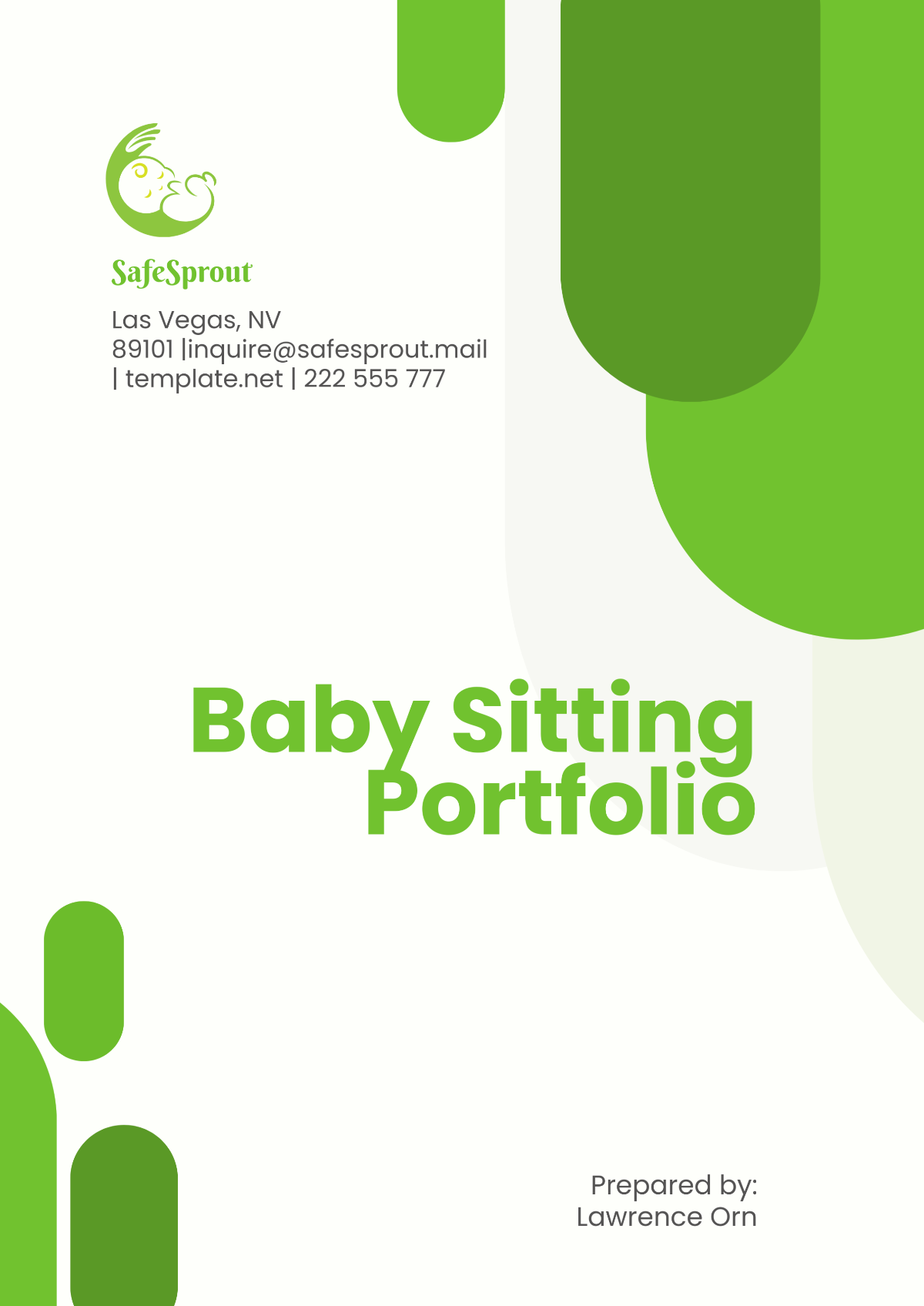Internal Audit Accounting Portfolio
Executive Summary
This portfolio provides an in-depth overview of the internal audit activities undertaken at [Company Name], highlighting the rigorous processes, diverse areas scrutinized, and the significant findings unearthed during the audit. It meticulously outlines the methodologies adopted by the audit team, ensuring a robust and comprehensive evaluation of the company's accounting operations, internal control frameworks, and adherence to the prevailing accounting standards and regulatory mandates. The findings from this audit shed light on crucial areas requiring attention and present targeted recommendations designed to fortify [Company Name]'s financial integrity, enhance operational efficiencies, and bolster compliance with the intricate landscape of financial regulations.
The audit's revelations are pivotal, not just for rectifying the identified shortcomings but also for setting a roadmap for continuous improvement. By embracing the recommendations laid out in this portfolio, [Company Name] can aspire to elevate its financial management practices to new heights, ensuring not only compliance but also setting a benchmark for best practices within the industry.
Introduction
Internal auditing stands as the bedrock of transparent governance and unwavering accountability within [Company Name]. It serves as the linchpin for assuring stakeholders that the company's myriad of risk management strategies, governance protocols, and internal control systems are not just operational but are functioning at their optimal level. The audit's breadth was comprehensive, covering a spectrum of facets within the accounting domain. This ranged from the scrutiny of financial statement integrity to ensuring compliance with the gamut of applicable laws and standards that govern financial reporting and operations.
This internal audit was not a mere procedural formality but a deliberate endeavor to delve deep into the financial workings of [Company Name], aimed at uncovering insights that could drive strategic improvements. The audit's scope was meticulously designed to cover critical areas that are fundamental to the financial well-being and regulatory compliance of the company, ensuring a holistic assessment of the accounting and financial management systems in place.
Audit Scope
Financial Reporting Accuracy
The cornerstone of any robust financial system is the accuracy and reliability of its financial reporting. This audit placed significant emphasis on examining the veracity and completeness of [Company Name]'s financial statements. This entailed a thorough review of the company's revenue recognition practices, expense allocation, asset valuations, and the overall financial statement preparation process. The goal was to ensure that the financial reports accurately reflect the company's financial status, in compliance with the Generally Accepted Accounting Principles (GAAP) and International Financial Reporting Standards (IFRS), providing a true and fair view of its financial health.
Compliance
In an era where regulatory frameworks are ever-evolving, ensuring compliance with accounting standards and regulatory requirements is paramount. The audit rigorously assessed [Company Name]'s adherence to relevant accounting standards, laws, and regulations that govern its operations. This encompassed a review of the company's procedures and records to verify compliance with tax laws, employment regulations, environmental laws, and other statutory requirements that impact the financial aspects of the business. The objective was to identify any areas of non-compliance and recommend measures to rectify such issues, thereby mitigating the risk of legal penalties, fines, or reputational damage.
Internal Controls
The effectiveness of internal controls is a critical determinant of a company's ability to safeguard its assets, prevent and detect fraud, and ensure the reliability of its financial records. The audit evaluated the design and operational effectiveness of [Company Name]'s internal control mechanisms. This included an assessment of control activities across various functions, such as cash handling, inventory management, and access controls to financial systems. The aim was to identify weaknesses or gaps in the internal control framework that could potentially lead to financial misstatements, losses, or fraud, and to recommend enhancements to strengthen these controls.
Risk Management
In the dynamic landscape of business, effectively managing financial risks is crucial for sustainability and growth. The audit analyzed [Company Name]'s risk management framework to ascertain its efficacy in identifying, assessing, and mitigating financial risks. This involved evaluating the processes for risk identification, the strategies employed for risk mitigation, and the mechanisms in place for risk monitoring and reporting. The goal was to ensure that [Company Name] has a robust risk management framework that not only identifies and mitigates current financial risks but is also agile enough to adapt to emerging risks.
By addressing these critical areas, the internal audit aimed to provide [Company Name] with actionable insights and recommendations that can significantly enhance its financial management practices, internal controls, compliance posture, and risk management capabilities. This comprehensive approach ensures that [Company Name] not only meets its statutory and regulatory obligations but also adopts best practices that contribute to its long-term financial stability and success.
Methodology
The methodology adopted for the internal audit at [Company Name] was meticulously designed to ensure a thorough and comprehensive evaluation of the company's financial and operational integrity. This multifaceted approach combined various audit techniques, each contributing uniquely to the overall audit objectives.
Document Review
The audit commenced with an extensive review of financial records, policies, and procedures, forming the bedrock of the audit process. This phase involved a detailed examination of financial statements, including balance sheets, income statements, and cash flow statements, to verify their accuracy and completeness. The review extended to scrutinizing accounting policies and procedures to ensure they are in line with best practices and regulatory requirements.
Policies related to revenue recognition, expense reporting, asset depreciation, and inventory management were evaluated for their adequacy and alignment with the Generally Accepted Accounting Principles (GAAP) or International Financial Reporting Standards (IFRS), as applicable. Internal policies and procedures governing financial transactions, data recording, and reporting were also assessed to ensure they provide a robust framework for accurate financial management and reporting.
Interviews
Engaging with key personnel through interviews was an integral part of the audit methodology. These interactions provided valuable insights into the practical aspects of the company's financial operations and internal controls. Discussions were held with various stakeholders, including accounting staff, department heads, and management personnel, to gain an understanding of the processes in place, identify any challenges faced in day-to-day operations, and gather perspectives on the effectiveness of current policies and procedures.
These interviews also served as a platform to verify information obtained from document reviews and to clarify any ambiguities. They were instrumental in understanding the culture of compliance and risk awareness within the company, offering a qualitative dimension to the audit findings.
Sample Testing
Sample testing of transactions represented a critical component of the audit methodology, providing empirical evidence of the operational effectiveness of internal controls and compliance with established policies and procedures. A random selection of financial transactions across various periods and departments was examined in detail. This included scrutinizing invoices, receipts, journal entries, and other transaction records to validate their authenticity, accuracy, and compliance with the company's accounting policies.
The sample testing process was designed to cover a representative mix of transactions, including those prone to higher risks of errors or fraud. This approach helped in identifying any inconsistencies, irregularities, or non-compliance issues in the transaction processing and recording mechanisms, thereby offering a direct assessment of the control environment and risk exposure.
Data Analysis
The adoption of analytical tools for data analysis was a cornerstone of the audit methodology, enabling a comprehensive examination of financial data to uncover trends, anomalies, or discrepancies that might indicate underlying issues. Advanced data analytics techniques were employed to sift through vast volumes of financial data, facilitating the identification of patterns that could signify potential risks, inefficiencies, or areas requiring closer scrutiny.
This phase involved the use of statistical analyses, trend analyses, and comparative studies to benchmark [Company Name]'s financial performance and practices against industry standards and best practices. Data visualization tools were also utilized to present complex financial data in an easily interpretable format, aiding in the detection of unusual fluctuations, variances from expected patterns, or other indicators of potential concern.
Audit Findings
The audit findings are summarized in the table below, detailing the area audited, findings, risk level, and recommendations for improvement.
Area Audited | Findings | Risk Level | Recommendations |
|---|---|---|---|
Financial Reporting | Minor discrepancies in revenue recognition and expense allocation. | Low | Enhance training on accounting policies. |
Compliance | Overall strong compliance with accounting standards and regulations. | Low | Continue monitoring changes in regulations. |
Internal Controls | Some controls around cash handling need strengthening. | Medium | Implement more robust controls and periodic reviews. |
Risk Management | Effective identification and management of financial risks. | Low | Maintain current risk management practices. |
Detailed Findings and Recommendations
Financial Reporting
The audit process uncovered minor discrepancies in the revenue recognition and expense allocation processes. These discrepancies primarily involved the timing and categorization of revenue and expenses, which, although not material, could potentially lead to inaccuracies in financial reporting if not addressed. Instances were observed where revenue was recognized prior to the fulfillment of underlying service obligations, and certain expenses were allocated to incorrect accounting periods or budget lines.
Recommendation: To mitigate these issues, it is imperative to conduct regular training sessions focused on the nuances of revenue recognition and expense allocation principles. These sessions should aim to enhance the accounting staff's comprehension and application of the relevant accounting policies and standards. Additionally, the development of detailed guidelines and checklists for revenue and expense transactions could serve as useful tools for ensuring consistency and accuracy in financial reporting.
Compliance
The company demonstrated commendable adherence to accounting standards and regulatory requirements, showcasing a strong compliance culture within the organization. The audit did not uncover any significant instances of non-compliance, indicating that the existing compliance mechanisms and controls are effectively ensuring adherence to legal and regulatory frameworks.
Recommendation: Despite the positive findings, it is crucial for the company to maintain a proactive stance on compliance. This involves continuous monitoring of regulatory changes and updates in accounting standards to preemptively address any potential compliance issues. Establishing a regular review process for compliance policies and conducting periodic compliance audits could further reinforce the company's commitment to upholding high standards of regulatory conformity.
Internal Controls
Certain weaknesses were identified in the internal controls surrounding cash handling processes. Notably, the segregation of duties related to cash transactions was found to be inadequate, with the same individuals responsible for both handling cash and recording transactions. Additionally, periodic reconciliations of cash balances were not conducted with sufficient frequency, increasing the risk of errors or misappropriation going undetected.
Recommendation: Strengthening the internal controls around cash handling is imperative. This can be achieved by implementing a more stringent segregation of duties, ensuring that different individuals are responsible for cash handling, recording transactions, and reconciling balances. Increasing the frequency and rigor of cash reconciliations will also enhance the detection and prevention of discrepancies, thereby safeguarding the company's assets.
Risk Management
The company's risk management framework was assessed to be effective in identifying, assessing, and mitigating financial risks. The framework encompasses a comprehensive risk identification process, clear risk assessment methodologies, and well-defined risk mitigation strategies. This robust framework facilitates the timely identification of financial risks and the implementation of appropriate measures to mitigate their impact.
Recommendation: It is recommended that the company continue with its current risk management practices, ensuring they remain relevant and effective in the face of changing business dynamics and external environments. Regular reviews and updates to the risk management framework should be undertaken to incorporate emerging risks and to refine risk mitigation strategies as necessary. Additionally, fostering a risk-aware culture through ongoing education and communication can further enhance the effectiveness of the risk management processes.
Conclusion
The internal audit of [Company Name]'s accounting department has illuminated a fundamentally sound financial reporting and compliance framework. The audit's findings point towards a well-established system with commendable strengths in compliance and risk management. However, areas requiring improvement have been identified, particularly in the realm of internal controls and certain accounting practices.
By proactively addressing the recommendations provided in this audit, [Company Name] has the opportunity to fortify its financial management practices significantly. Enhancing the training and development of the accounting staff, bolstering internal controls, and maintaining a vigilant approach to compliance and risk management will collectively contribute to elevating the accuracy, reliability, and integrity of the company's financial reporting and internal control systems. This commitment to continuous improvement and adherence to best practices will not only safeguard [Company Name]'s financial health but will also reinforce its reputation for excellence and trustworthiness in financial management.
Action Plan
To effectively address the recommendations outlined in the internal audit report, [Company Name] will implement a structured action plan. This plan will serve as a roadmap to guide the company through the necessary improvements in financial reporting, compliance, internal controls, and risk management practices.
Responsible Persons
Each recommendation will be assigned to a specific individual or team within the organization, ensuring clear accountability for the implementation process. For example, the Finance Manager will oversee enhancements in financial reporting practices, while the Compliance Officer will be responsible for updating and monitoring compliance-related actions. The Internal Audit team will take charge of strengthening internal controls, and the Risk Management department will handle updates to the risk management framework.
Timelines for Implementation
Clear timelines will be established for each action item, ensuring a timely and efficient implementation process. Short-term actions, such as conducting training sessions for accounting staff, will be scheduled within the next three months. Medium-term actions, like revising compliance policies, will be targeted for completion within six months. Long-term initiatives, such as overhauling the risk management framework, will be planned out over the next year, with milestones set to monitor progress.
Monitoring Mechanisms
To ensure that the action plan is effectively executed and the desired improvements are achieved, robust monitoring mechanisms will be put in place. Regular progress reviews will be conducted, involving the responsible persons and senior management, to assess the implementation status of each action item. Key performance indicators (KPIs) will be defined for each area of improvement, allowing for quantitative assessment of progress and effectiveness. Any deviations from the plan or unexpected challenges will be promptly addressed, with adjustments made to the plan as necessary to stay on course.
This action plan is designed to be dynamic, allowing for adjustments and refinements in response to the evolving needs of [Company Name] and the outcomes of the implemented actions. By following this structured approach, [Company Name] commits to a continuous improvement process that will enhance its financial integrity and operational efficiency, aligning with best practices and regulatory requirements.
Sign-off
This portfolio has been prepared and reviewed by the internal audit team of [Company Name]. It is intended for internal use only to facilitate continuous improvement in accounting practices and controls.
Auditor's Name: [Auditor's Name]
Position: [Position]
Date: [Date]
This portfolio is a dynamic document subject to updates and revisions as necessary to reflect changes in [Company Name]'s business environment, accounting practices, and internal control systems.

















































